Reading time 11 minutes.
To discover the Salta region, we followed the 5-day road trip detailed in this blog. We rented a car for 6 days, and booked it two days in advance. The price online was significantly better than in-store. The feeling of freedom during a road trip with just the two of us is hard to beat. The capital of the Salta region is also called Salta.
Keep in mind that the photos do not do justice to the beauty of the landscape.
Wednesday, Jun 12, 2024
A day in Salta, the city
Salons de thé often serve pastries with sparkling water.
We notice that most people writing to us in Spanish do not put the reversed interrogation or exclamation mark at the beginning of a sentence. I guess it is not too useful unless you read out loud.
The main square, Plaza 9 de Julio (the day of the independence in 1816), and the surrounding buildings are very beautiful and reminds us of the Plaza de Armas in Peru
We visited the Centro Cultural América and the Museo de Arte Contemporáneo, both located around the square. It is nice to have free art museums, even small ones.
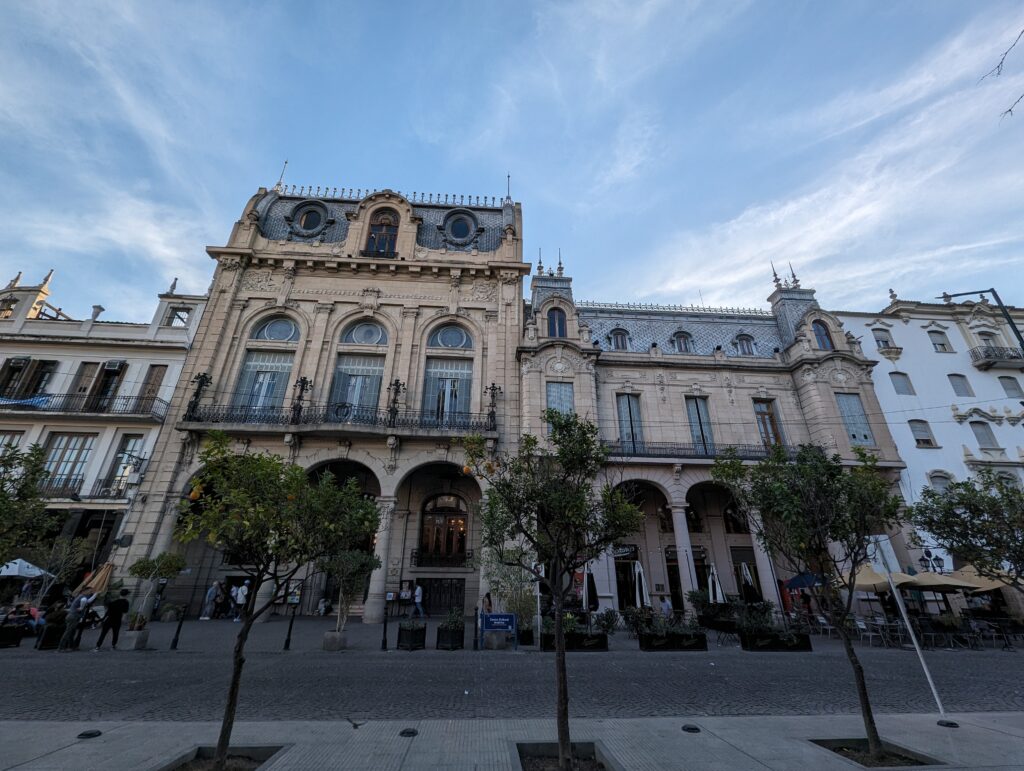
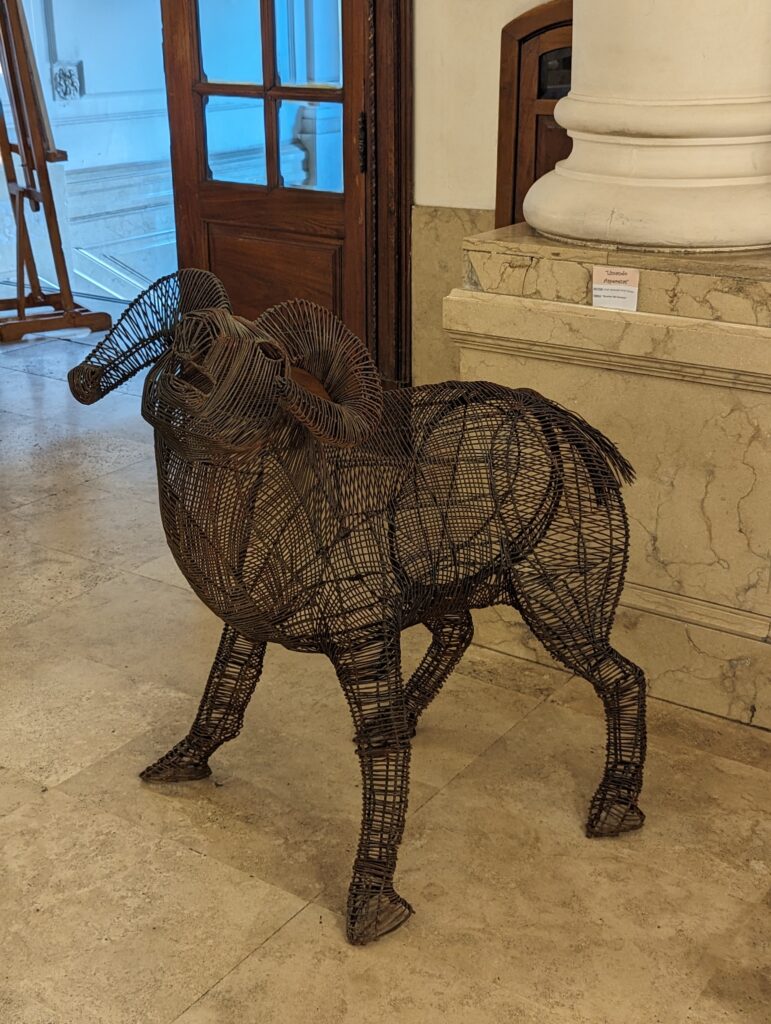
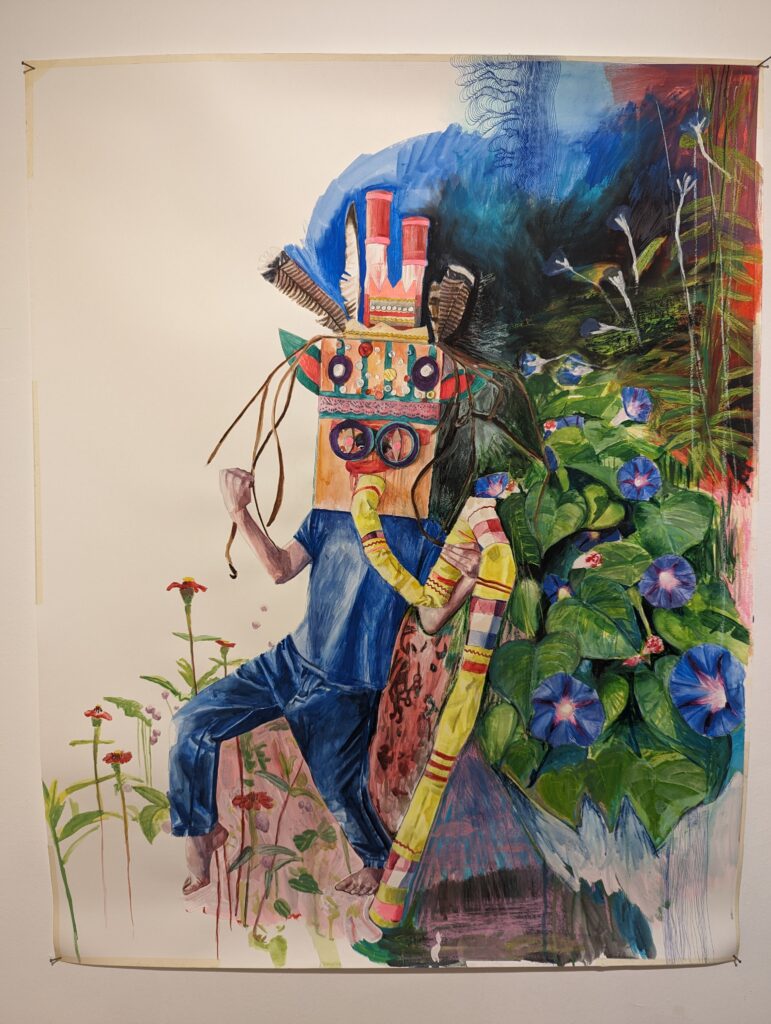
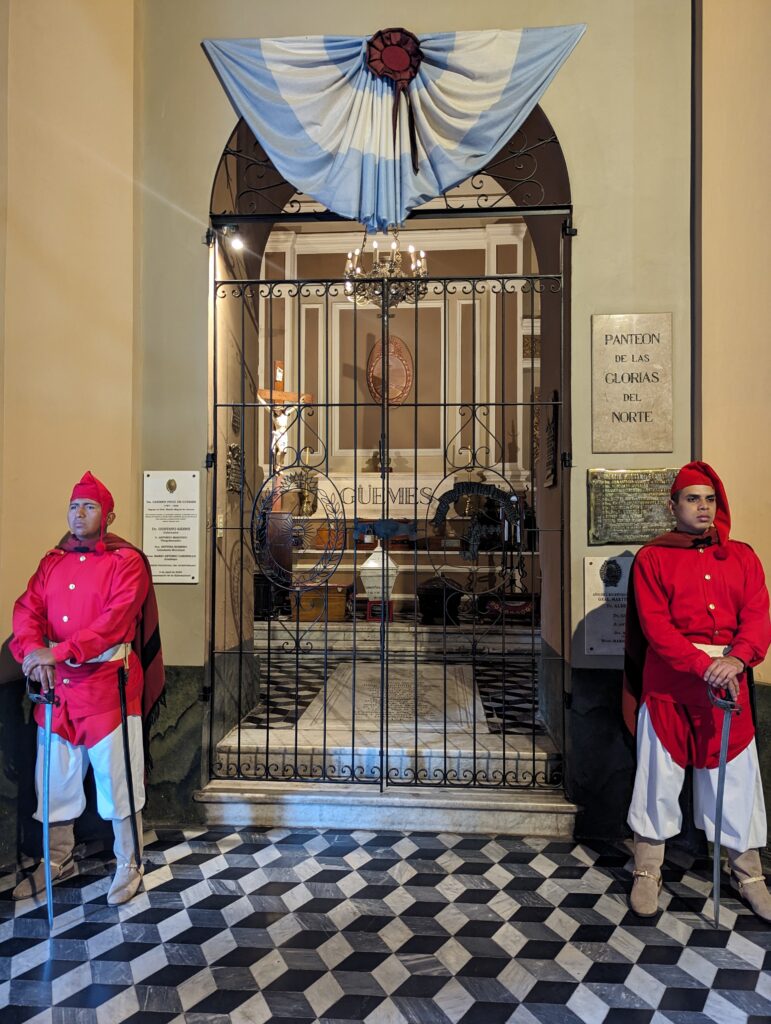
There are extremely long queues in front of some banks and ATMs, especially at Macro bank. We guess inflation and withdrawal limits are behind it…
Fruits and vegetables very expensive at the supermarket compared to meat and alcohol.
The blue dollar rate has gone up quite a bit in the last two months: from approximately one USD for 1000 to 1280 pesos. In the meantime, the official rate has remained almost the same. We should have kept less Argentinian pesos from our first trip. Fortunately, the rate we get when paying by credit/debit card is closer to the blue dollar rate than the official rate.
Tonight we tried everything on the menu of La Salteñeria (empanadas restaurant in Bolivia). Highlights: the empanada Potosina, also called salteña, is a large empanada from Bolivia with soup inside (to be fair, the women who introduced it was an immigrant from Salta); and the Provolete (melted cheese) with bread; the Turron Salteno, a dessert, was surprising good, and it got better as we ate more of it.
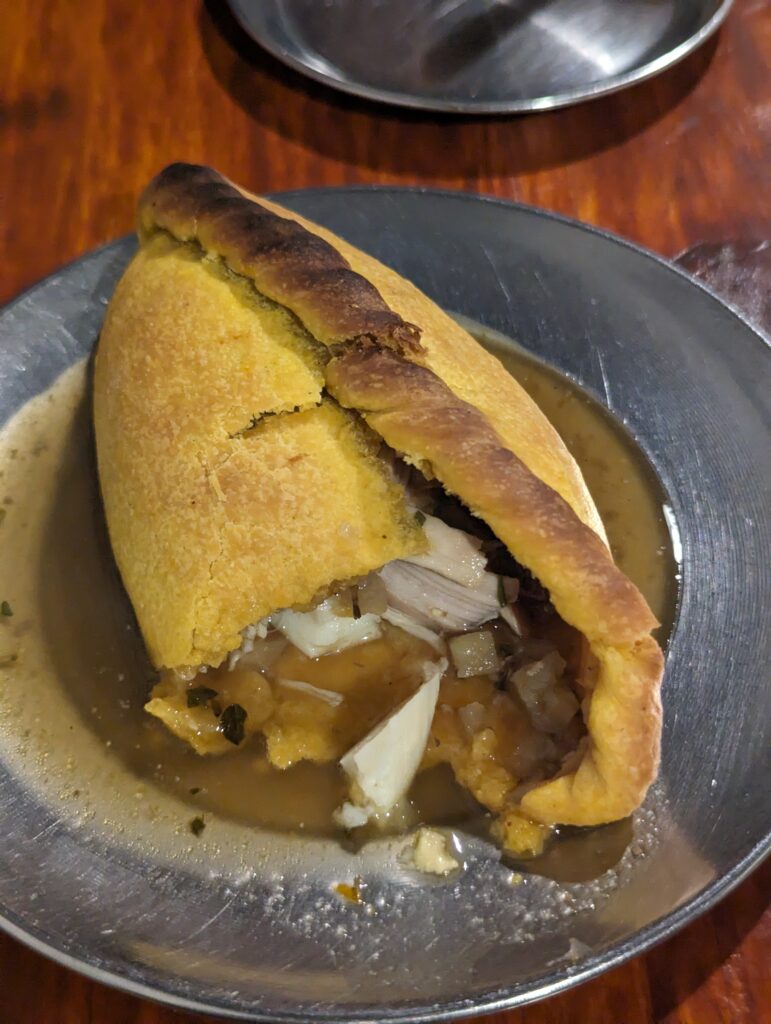
Thursday, Jun 13, 2024
Second day in Salta, the city
The Cerro Bernardino is accessible from the centre of Salta by cable car or on foot, after an ascent of 280 meters. I am not sure all cars are allowed up there.
It offers a great view of the city and the Andes. We saw many very small birds (hummingbird). It is fascinating to see them fly while eating flowers. We climbed, covered by the shades of the trees.
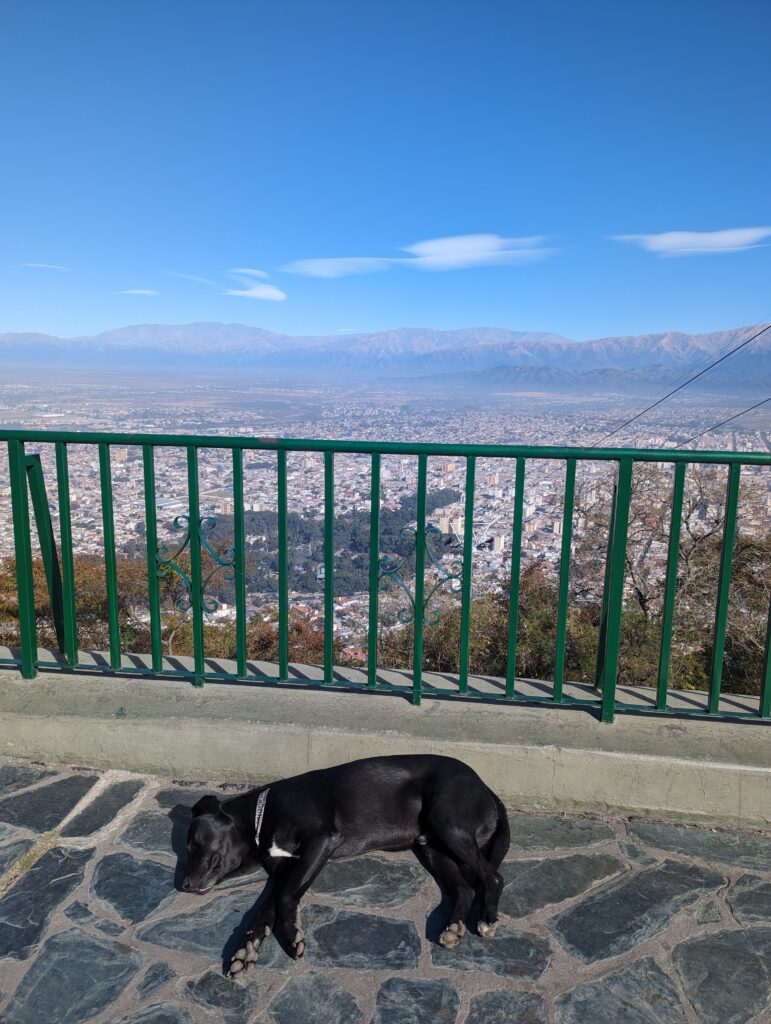

There are fees with Western Union after the first transfer. Some students told us it can be avoided by simply using another email address. All Western Union offices are also providing Pago Facil services.
Many shops do la siesta (they close for the afternoon nap). It is more common in the north of Argentina, like in Salta.
We came to the Museo de Arqueología de Alta Montaña at 3 pm to book a guided tour at 4 pm. The museum is mostly about the three children sacrificed by the Incas at the summit of the volcano Llullailaco (6739 meter high).
The Camino Inca, Qhapaq Nan in Quechua, was a 40,000 km (of which 25 km are known?) road system connecting the Inca Empire, spanning from South of Columbia to Chile and Argentina, Mendoza. The three children might have been sacrificed for religious and political reasons (that territory where they were found was on the fringe of the Inca Empire). Miniature objects of everyday life were found next to the bodies. Materials used include spondylus shell, considered very precious, along with gold and silver.
Chicha (fermented corn 🌽 alcohol), was used to knocked them out, they were then killed by low temperatures or a blow behind their heads.
They carried with them bolsitas or chuspas (“bag” in Quechua) of coca leaves. The three mummies are called the boy, the girl of lightning and the maiden. Their bodies are incredibly well-preserved. In the museum, they are maintained at 2% of oxygen. Unfortunatly no photos were allowed.
Lots of pigeons because people are feeding them with bags of corn sold on the square. Who likes pigeons?
We had a few issues with computer systems since we arrived in Latin America: Hotel pre-authorization in Brazil, national parks in Chile, LATAM, bus companies websites, etc. It seems like all their best software engineers went to work for foreign companies…
The number of police officers is truly impressive and perhaps reassuring.
We attended a concert of the Symphonic Orchestra of Salta. I couldn’t figure out if they were professionals. The conductor talked extensively about the Mozart and Schubert symphonies they were going to play. Musicians rarely take that much time to inform the audience, I think it was very useful.
They played Schubert 15th symphony, the guy has composed 1500 pieces.
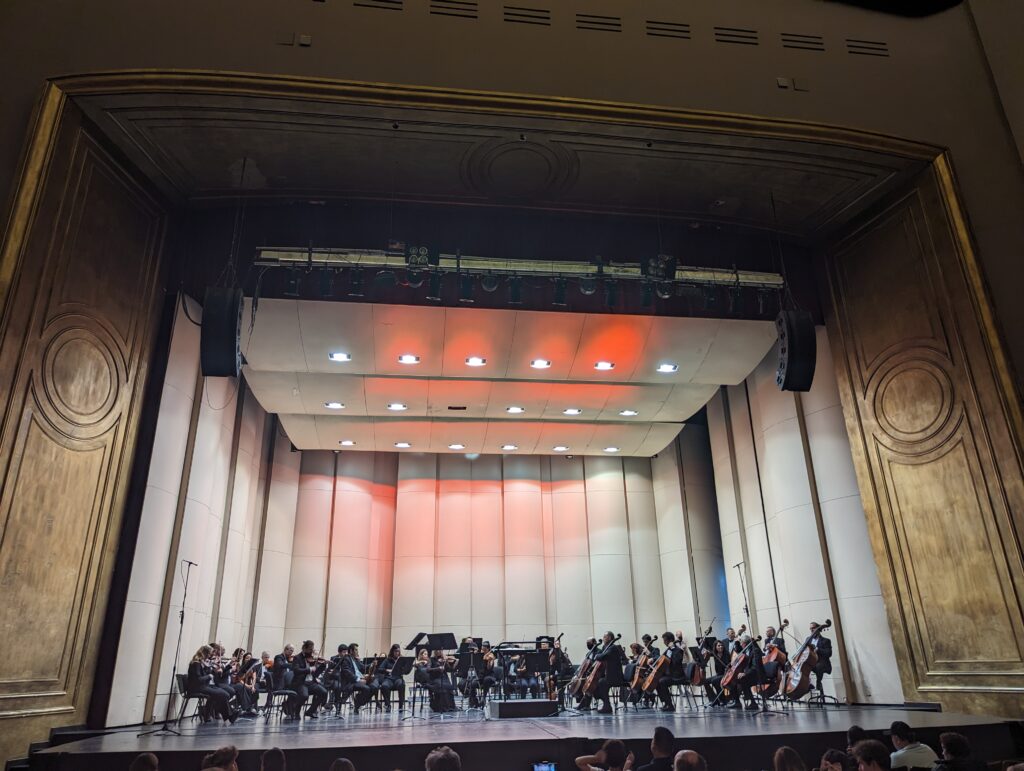
“La bise” in Argentina: a kiss on the right chick. Same in Chile and Bolivia actually.
Friday, Jun 14, 2024
Road trip: Salta, Cachi, and Molinos
Today is the beginning of the road trip from Salta in the Salta region.
We went to pick up our car, a bit afraid that something would go wrong with the company as we could book online but it was ”not possible” directly through the agency. Thankfully, all went well. The girl from the agence told us to avoid some roads and “forbid” us to go to some. Well we did not really follow her advice through the road trip.
On the way there are plenty of cactuses on the mountains. Many of them are several meters high.
We took the magnificent ruta 33 through the parque nacional de los cardones.
We see red stones, landscapes are green and red with low vegetation except for cactuses.

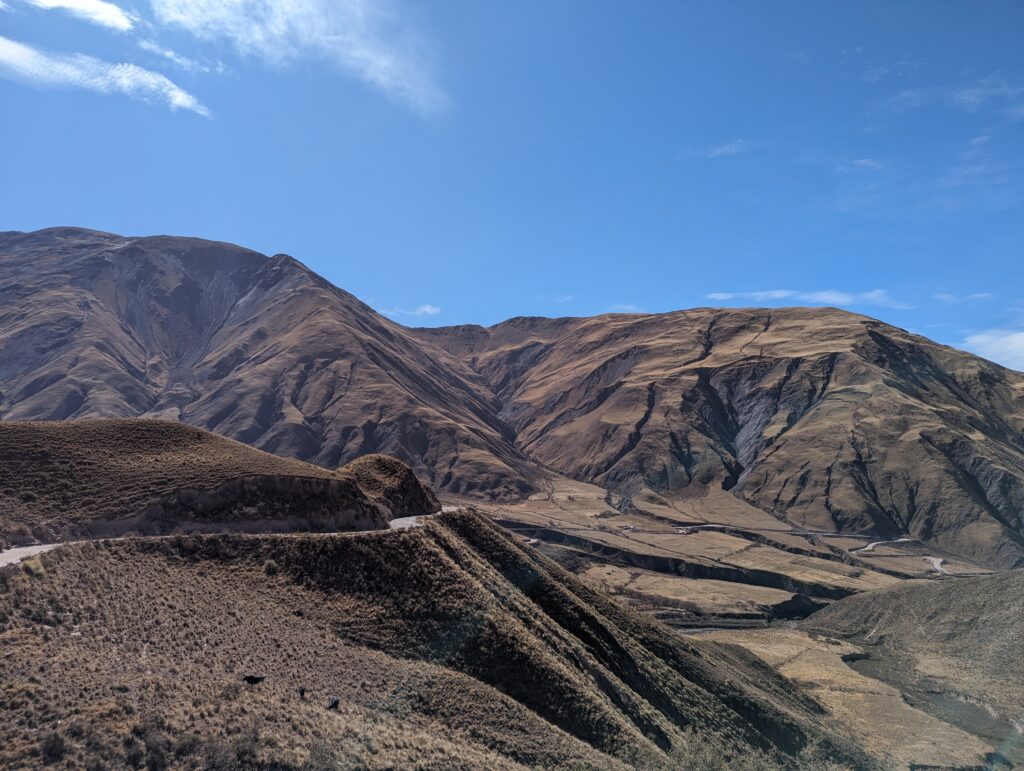
We stop for lunch in Cachi, a small village of 5000 inhabitants, mostly First Nations descendants. There is a cute main square.
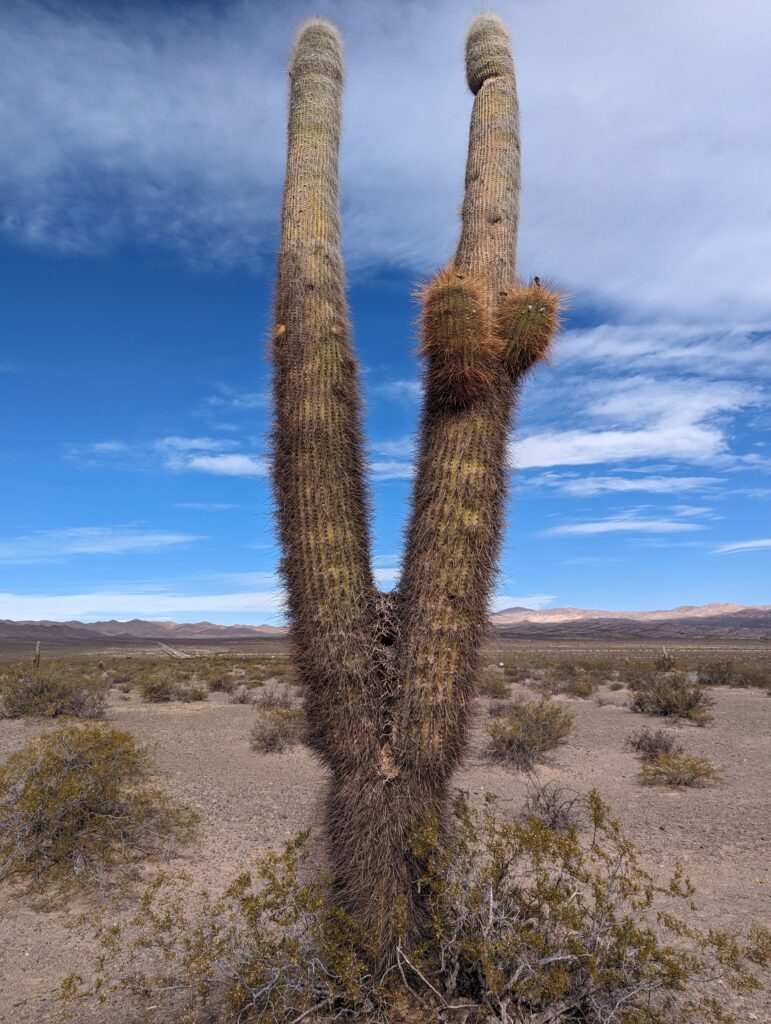
The Road 40, between Cachi and Molinos is a bumpy dirt road.
The speed limits do not make any sense. They range from 20 to 60 km/hour, even on perfectly flat and straight roads. I have not seen a speed limit above 60 km/hour between Salta and Cachi.
We stop for the night in Molinos, a smaller village than Cachi, with very large streets, and surrounded by the Andes. It is very quiet and peaceful.
The accommodation is simple and rustic with a charming inner courtyard. It is just perfect after a day on the road.
El Rancho de Manolo is one of the three restaurants in town. For dinner, there were 5 tables, 13 people, all French, except for a Latin American couple who arrived five minutes before we left. We wonder how it was possible that so many Frenchies were there in this tiny little village. Word of mouth, Facebook groups and the blogs must be behind it.
We had dulce de cayote con nueces is a dessert made of a kind of pumpkin with walnuts. It is very sweet. We should not be surprised, Argentinians generally love sweet things.
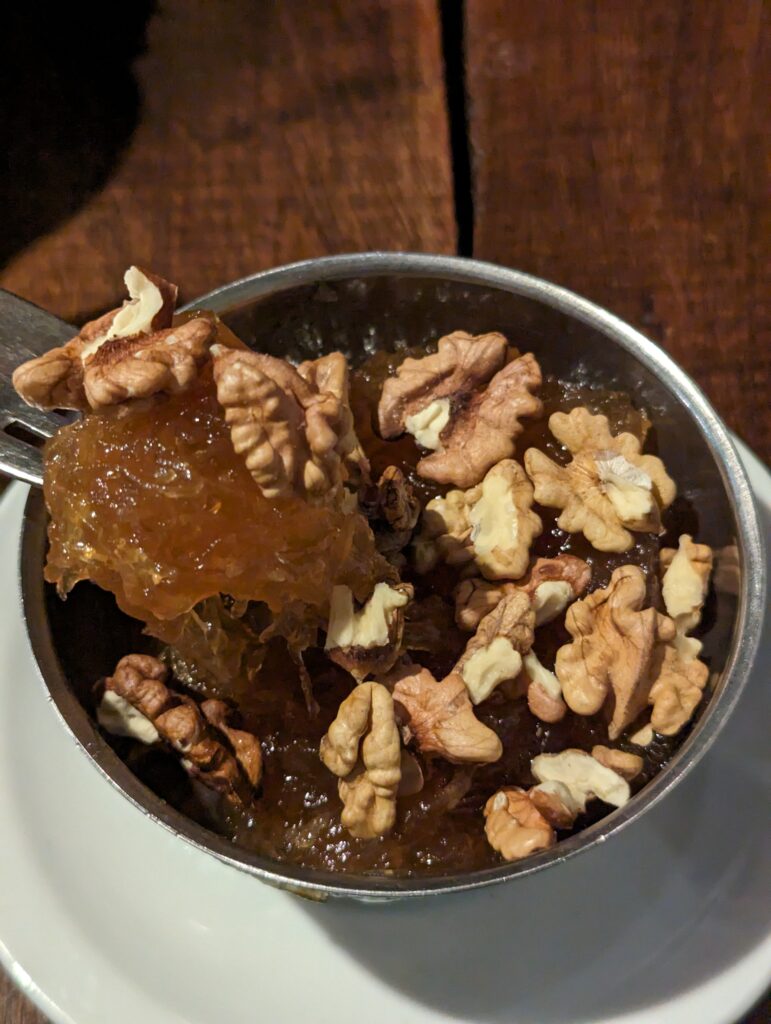
We both woke up in the middle of the night because we felt hot and very thirsty. I think we can blame MSG!
Saturday, 15 Jun, 2024
Molinos to Cafayate: la Quebrada de las Fletchas, Bodega Piattelli
The breakfast is basic : hot water for tea and coffee, and criollitos.
We share it at a large table with three French girls who are following approximately the same itinerary. They are doing an exchange of one semester at the University of Buenos Aires (UBA). It is a renowned public university, whose fundings are threatened by the newly elected government. So they witnessed students and professors protests. Argentinian students are studying very seriously because the economic situation is tough in Argentina. Many students work jobs and study at the same time. They don’t have the resources to visit their own country.
The road between Molinos and Cafayate is very bumpy. We start with Corte El Cañón which marks the beginning of Quebrada (gorge, ravine) de las Flechas.
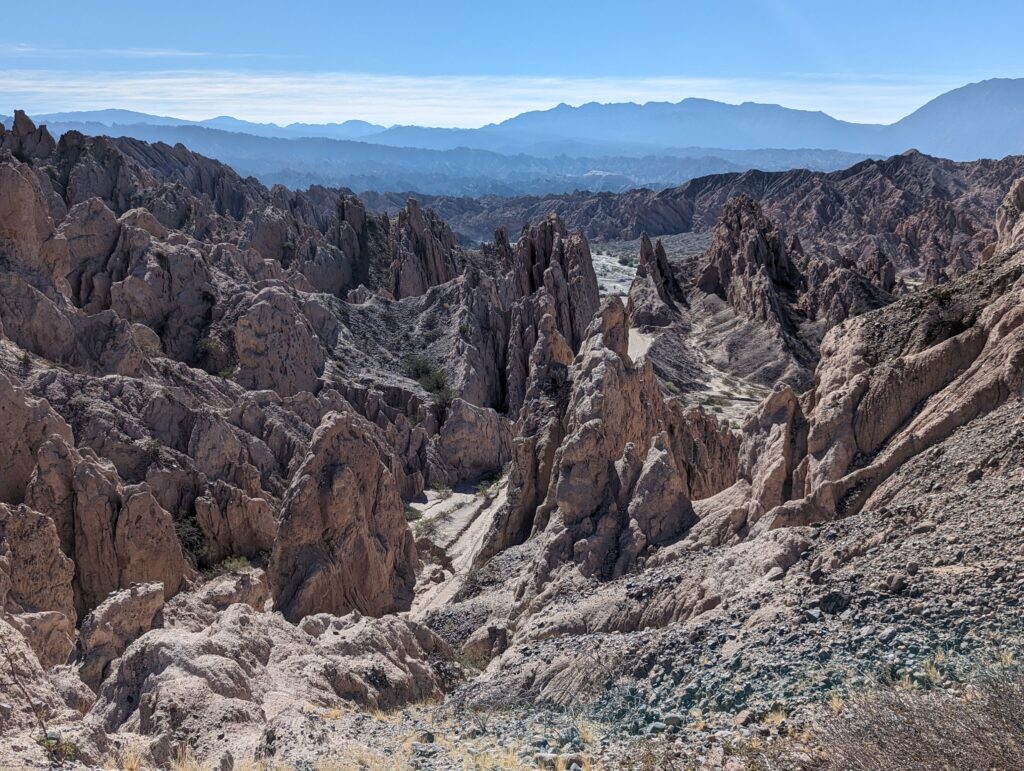
Cafayate is famous for its wine. We went to Piattelli Vineyards, ate at the restaurant of the beautiful resort (a new 2022 addition to the complex) instead of the tasting place.
There is a zero tolerance for drinking and driving. Since Piattelli was very close to the city, the chances of being caught are pretty low. Some people prefer to bike. We played rock paper scissors to determine who could enjoy drinking and who would drive. I ended up drinking the wine pairing.

The artisanal market in Cafayate had some good quality products. The sellers were the crafters, and they were not necessarily selling their crafts.
Many vehicles had lights issues.
Sunday, 16 Jun 2024
Cayafate to San Sebastian de Jujuy
It was so beautiful, we stopped every few kilometres, and walked a bit. I hope the pictures can give you a taste of it!
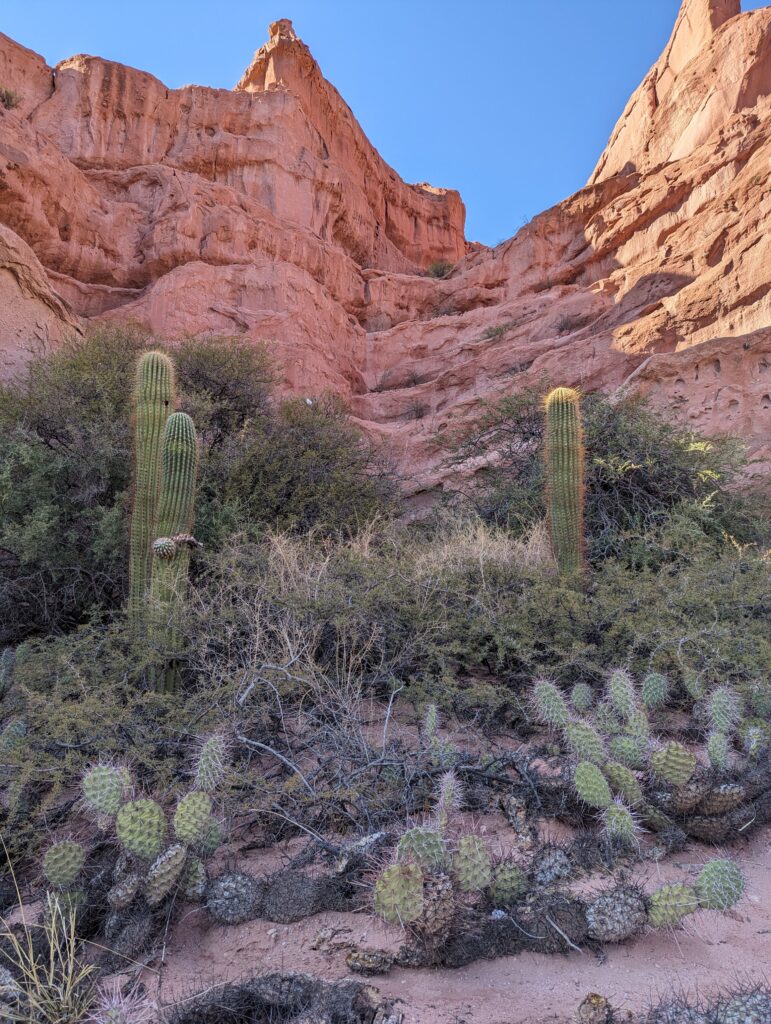
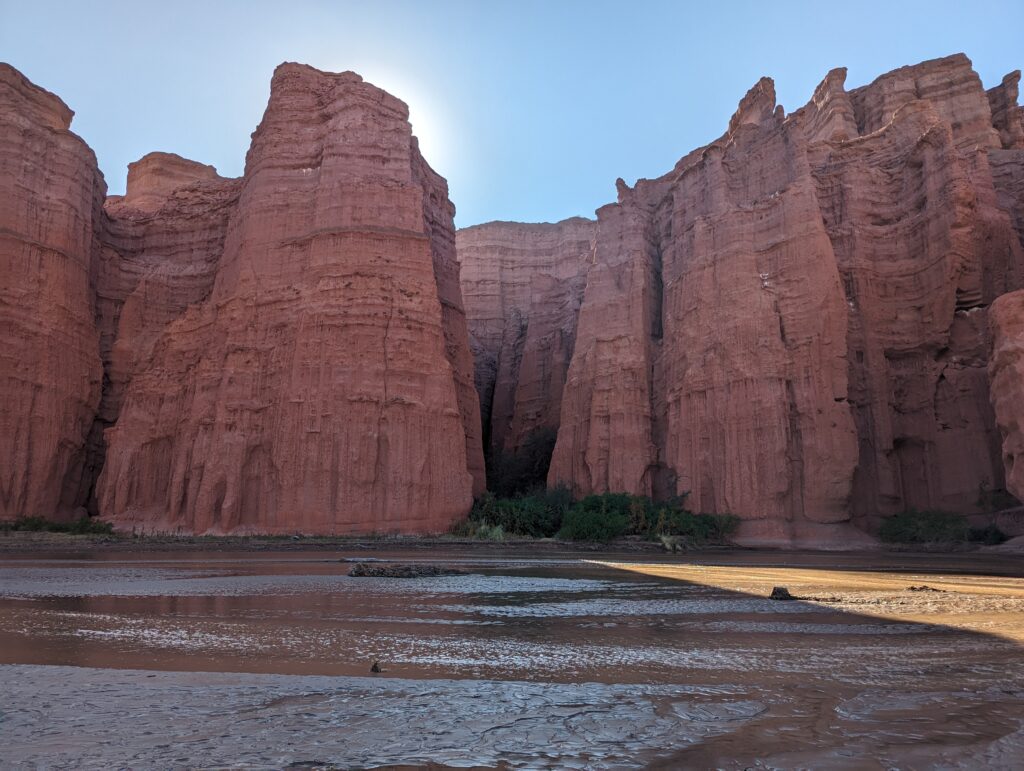
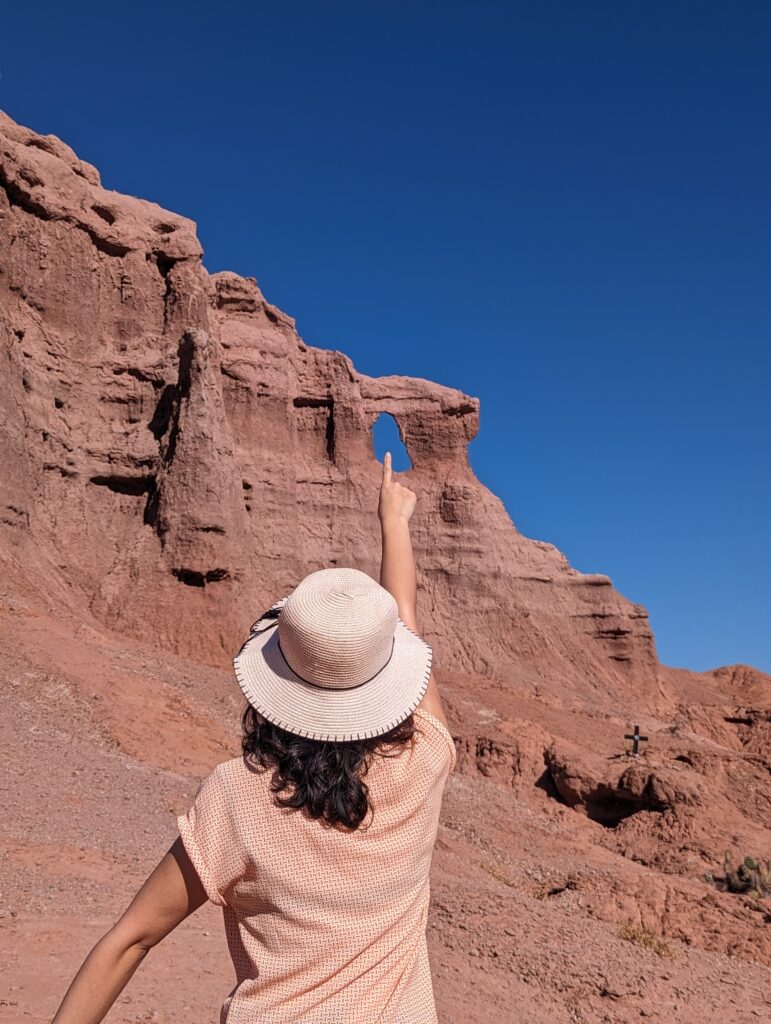
La Yesera is accessible after a short hike under the scorching sun. In our opinion, it should not be missed if you are taking this road.
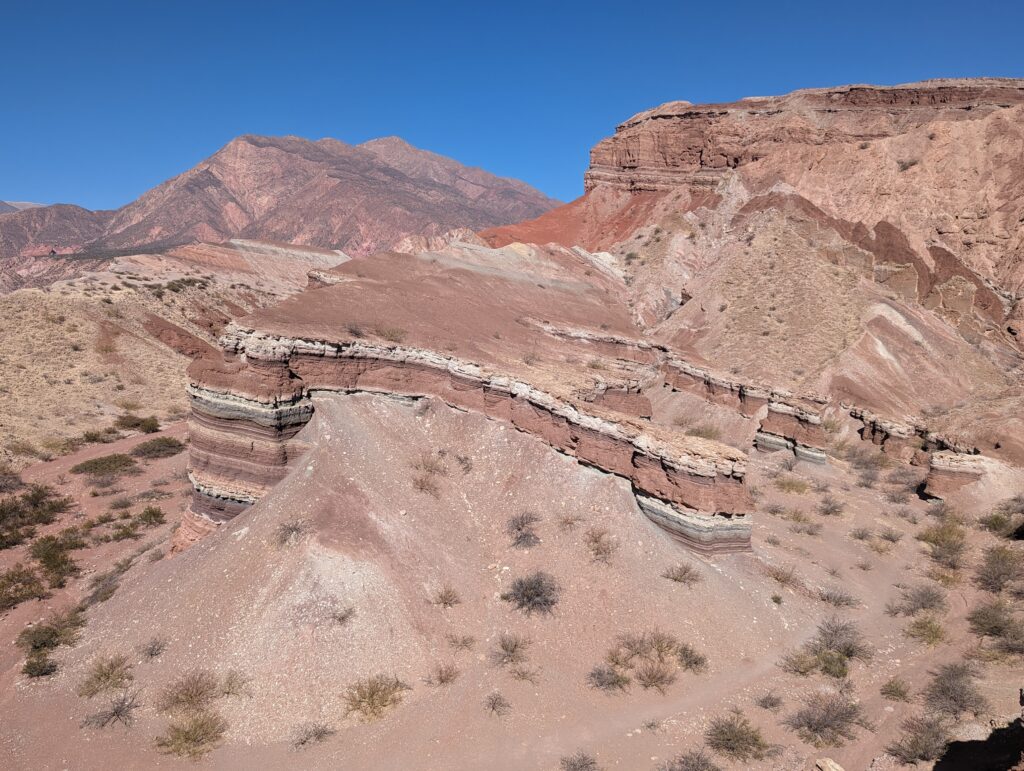
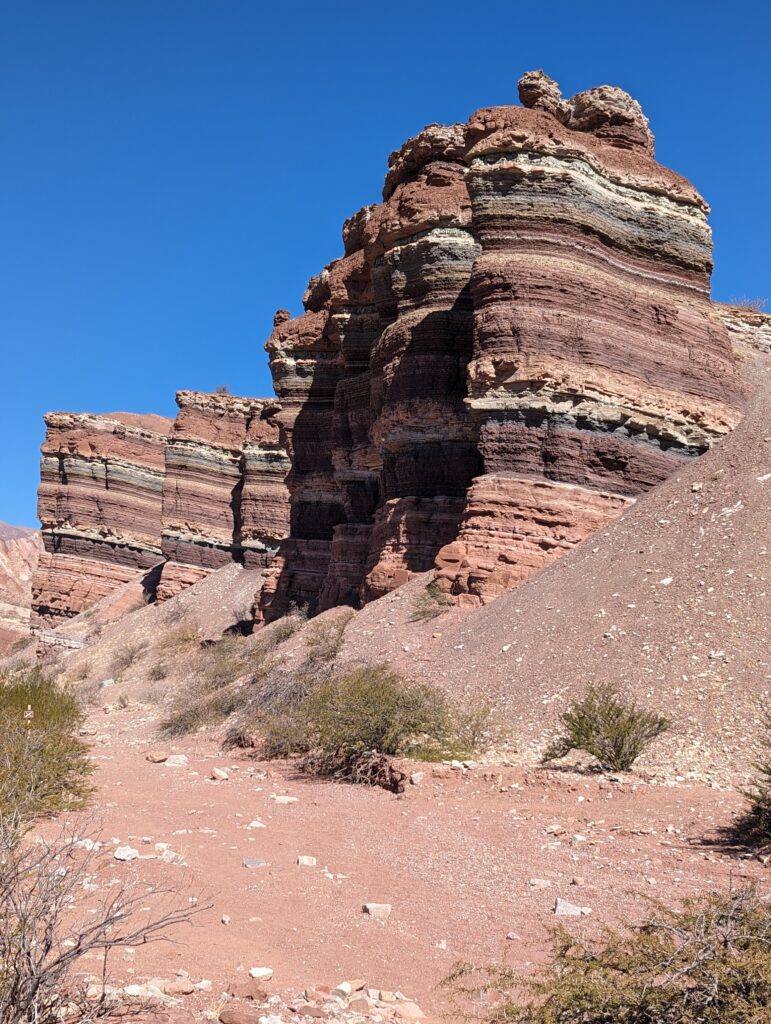
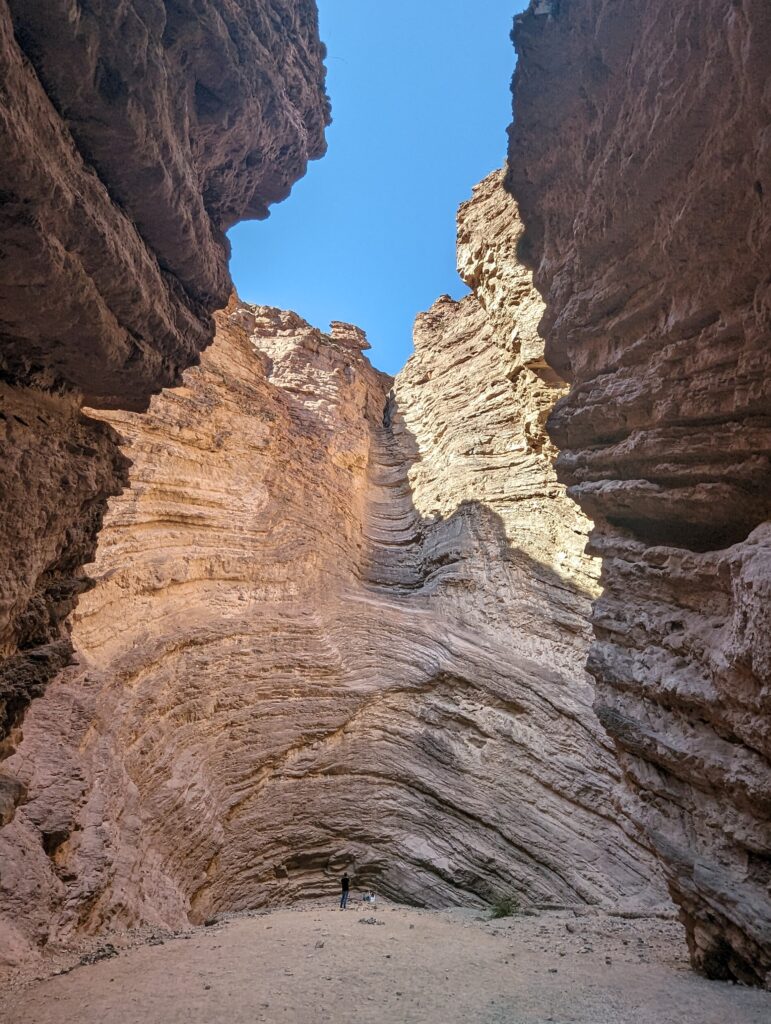
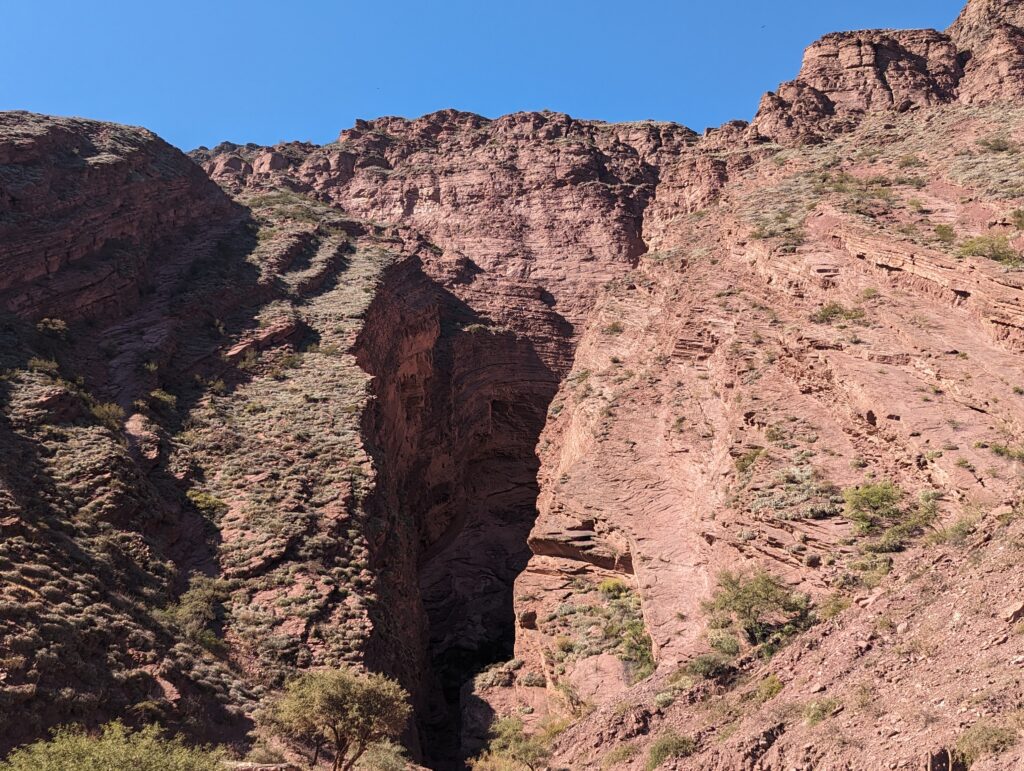
La Ruta 9 from Salta to San Sebastian de Jujuy is pretty terrible, very narrow and sinuous. We read that it was a route to avoid on many blogs but messed up the GPS and ended up driving through that route.
It passes through unusual landscapes for the Salta region: green jungle and big lakes.
Fortunately, there were not too many people. It felt like driving on a large bike lane rather than a road. These 2 hours were stressful.
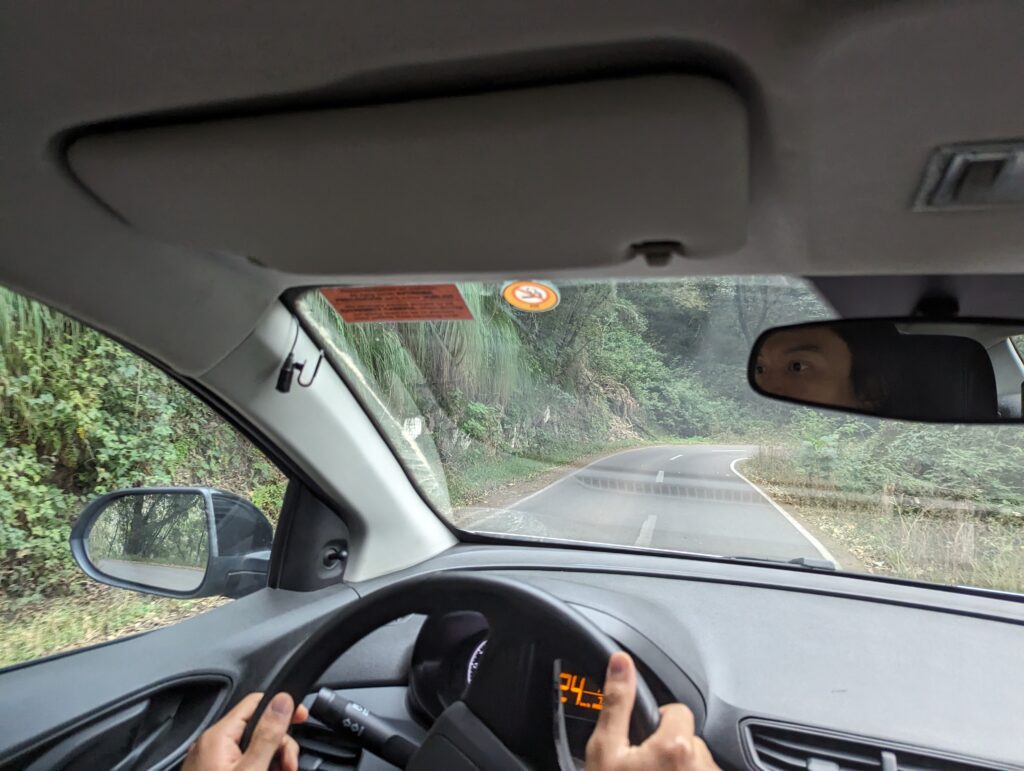
The owner of the place we rented that night asked us if we had some Indonesian ancestors. I think we are very tanned these days.
Monday, Jun 17, 2024
Hornocal, the 14 colour mountain
In the north of the region, we saw many local people hitch-hiking.
The closest city to Hornocal, Humahuaca, has narrow streets and traditional constructions.
We heard the road was bad. Actually forbidden by our car rental. But we climbed to Hornocal (24 km with 1.3 km of elevation) without any issue with our standard car. It was actually not worse than the other routes we took.
The mirador is high, at 4.7 km of altitude, you can be short of breath if you do the short but steep hike. The entrance was 500 pesos per person.
It was very impressive. I wonder if I like it more than the rainbow mountains near Cusco, Peru.
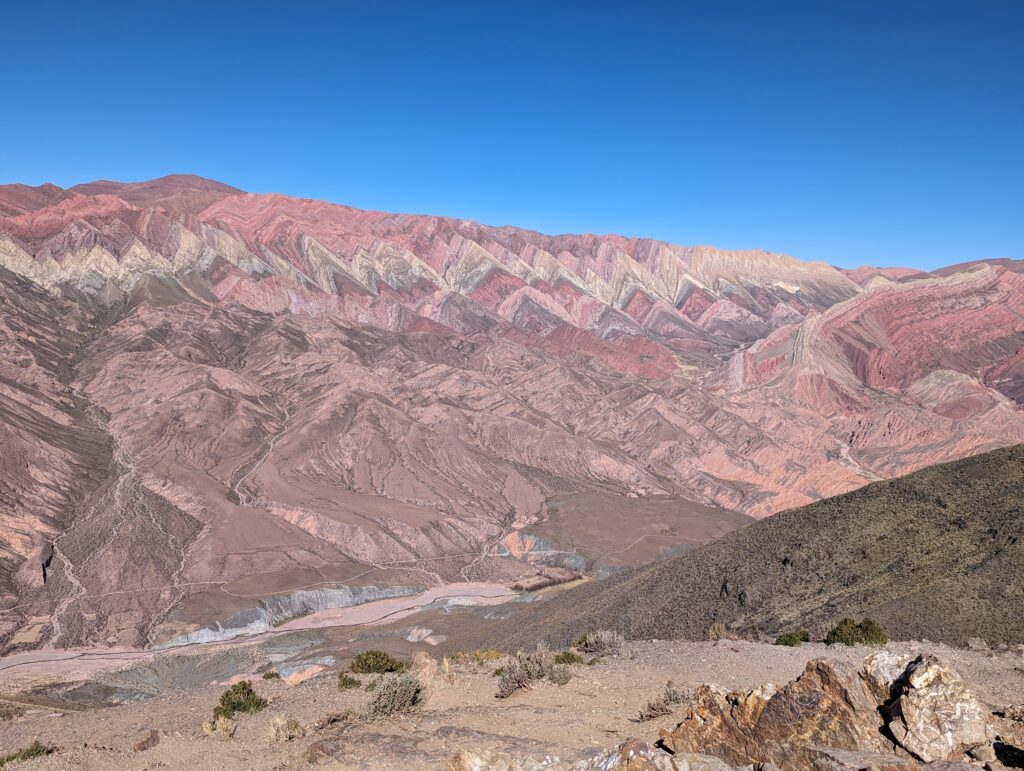
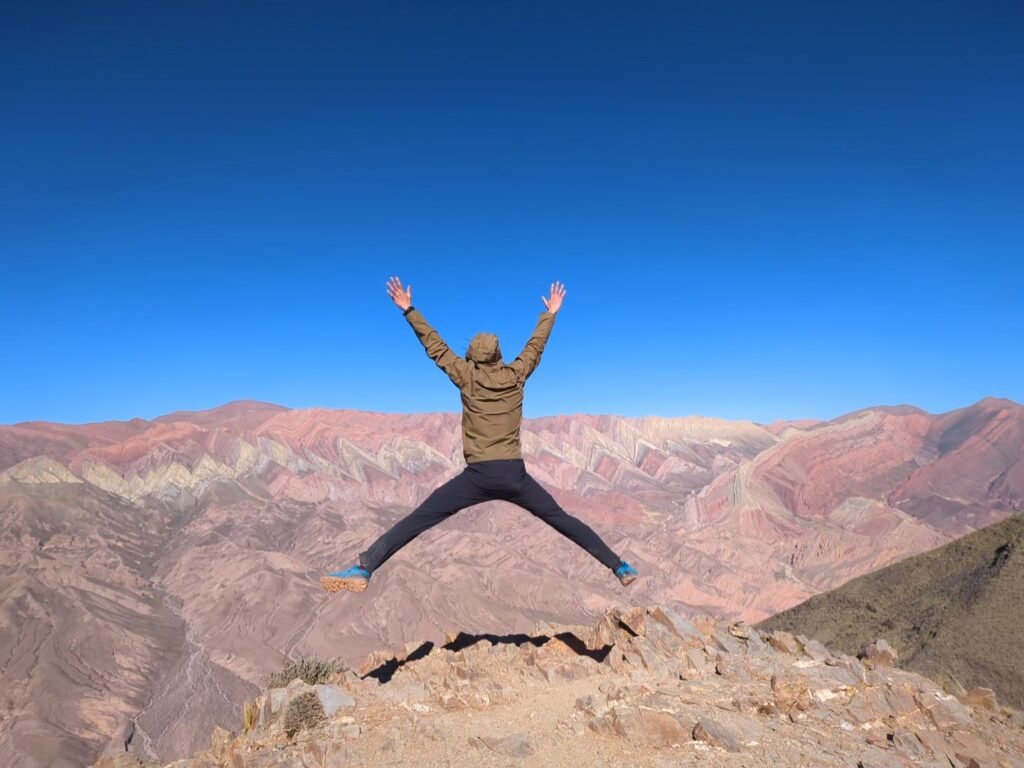
The accommodation for the night was exceptional. An ecological lodge with lamas and dry toilets! The owners lived in Buenos Aires, moved to the region on the land of the wife’s family, worked in the dehydration business (they have delicious dehydrated soups), and built these lodges.
Tuesday, Jun 18, 2024
Ecological Lodge, Salinas Grandes, Purmamarca, San Sebastian de Jujuy
In the morning, we walked the lamas on the 12 hectares of land shared by the extended family. What a lovely experience!
A few facts we have learned of these beautiful creatures. The lamas have molars but no teeth in the front on the upper jaw. They chew directly on their palate. There is a pure lama and a lama-guanaco. The guanaco is a wild animal. We can really feel a different behaviour between the two. They love eating raw corn. They vomit it and eat it again (how many times, I don’t know). They eat a few leaves but not the whole plant: they are ecological animals. When the ears are down, either they are eating or they might spit at you. In order to avoid it, do not look them in the eye. They are afraid of dogs. They feel safe in a pack. Furthermore, they pull pretty strong on the rope, even if they are not big, no more than 100 kg.
(The ancestor of the alpaga is the vicuna, both have superior wool. The lama is a descendant of the guanaco.)

Is it worth visiting the Salinas Grandes if you plan to visit the Salar de Uyuni later? Perhaps not, but I still enjoyed both. We had lunch at a restaurant with a view on the Salinas Grandes.
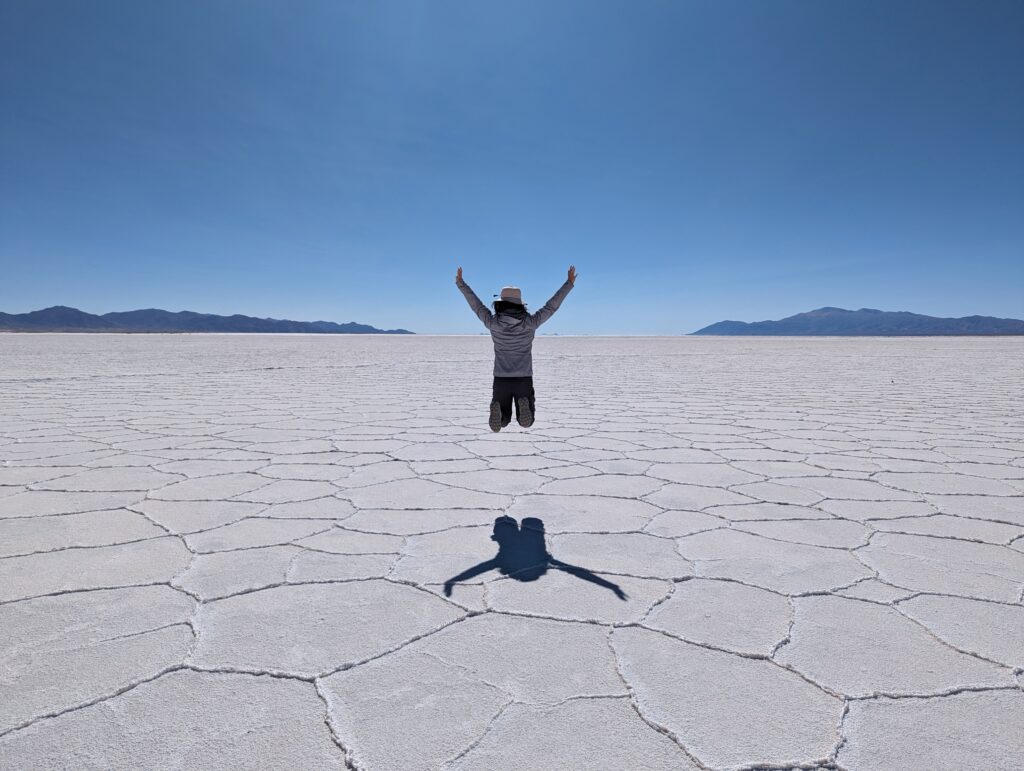
At the village of Purmamarca, we did the loop around the Siete Colores. You need to pay to go to the mirador and to hike. It is wise to have a bit of cash on you.

With the blog we are following, we often disagree about which villages are cute or not. The Salta region is incredibly beautiful, but I don’t find villages cute or charming there.
Wednesday, Jun 19
San Sebastian de Jujuy to Salta, Salta to Santa Rosa de Tastil
From San Sebastian de Jujuy to Salta, the itinerary road 56+9 is way better than road 9 alone.
We had lunch around Salta, and then headed to Santa Rosa de Tastil. At the restaurant, they usually have a way to wrap the cutlery in plastic or paper.
The road follows the circuit of El tren a las Nubes, it is mostly in good condition but sometimes terrible with gravel and large potholes filled with water. It was as if they destroyed some part of the route on purpose. We persisted even if it looked terrible at first. We saw a few cyclists.
Once we reached the very small town of Santa Rosa de Tastil, we returned by the same road, but our impressions were very different on the way back to Salta. On the way to Santa Rosa, at around 3-4 pm, the sun was high and facing us. It was hot, a bit uncomfortable. The landscapes were pleasant, but not as beautiful as what we saw earlier in the road trip. On the way back, the sun was on our back, it was more comfortable in the car. As we were driving down the valley, the light on the mountains made them look very different. We saw colours from grey to purple and red. We could not believe how beautiful it looked. The trip to Santa Rosa was worth it.
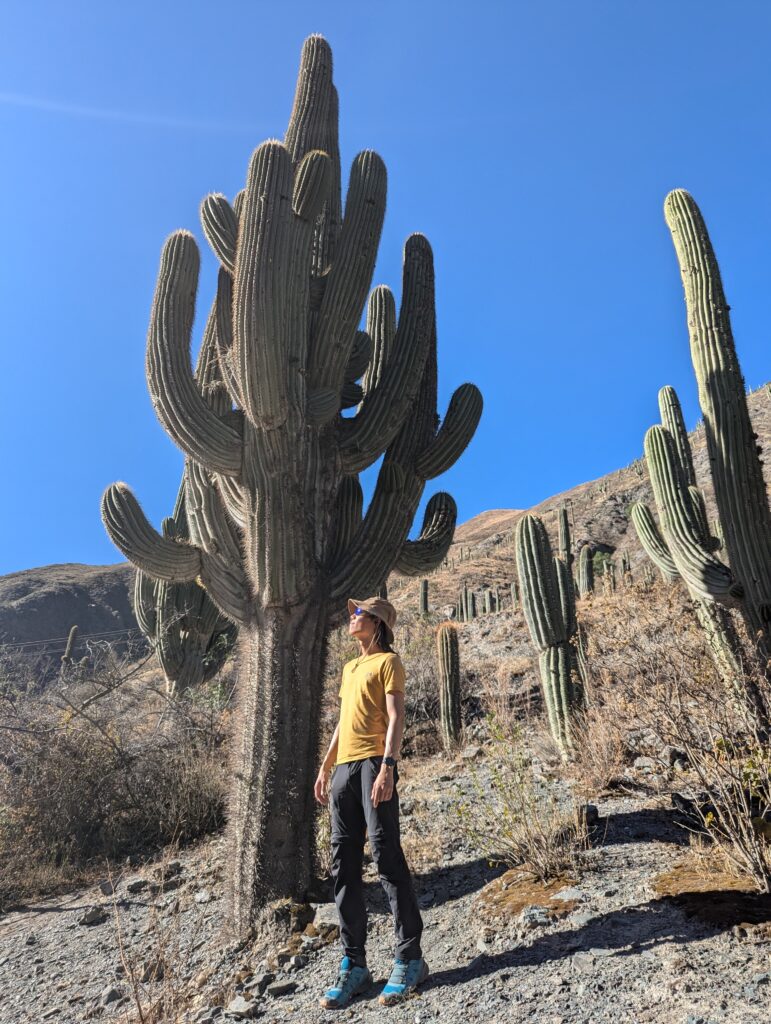
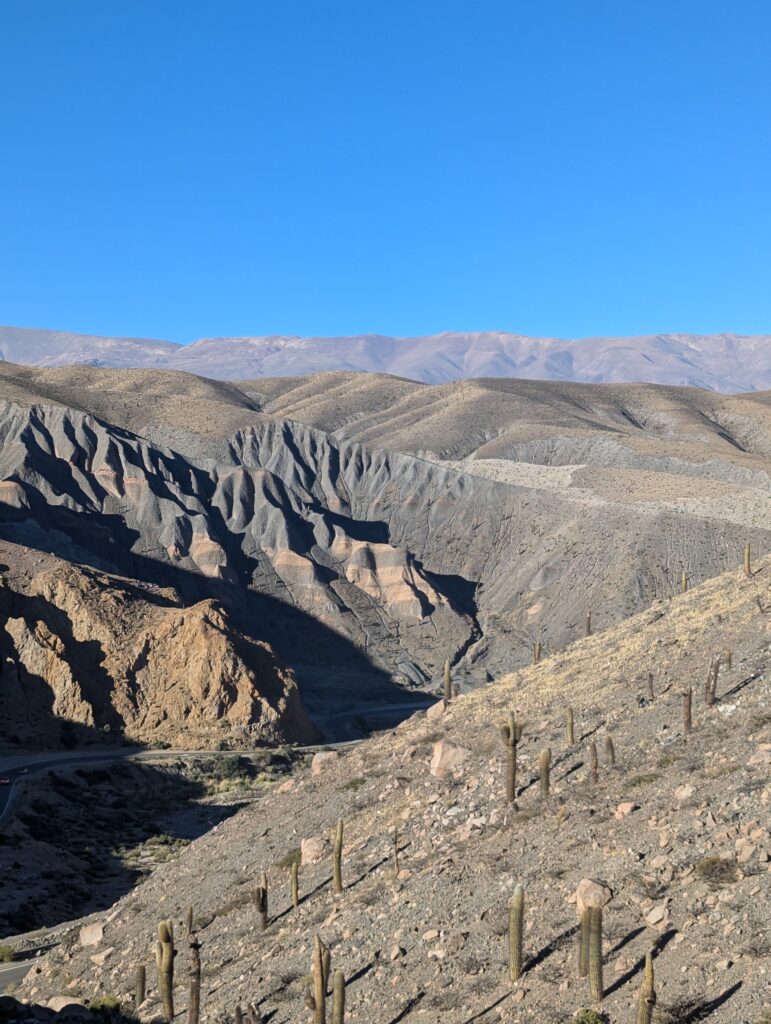
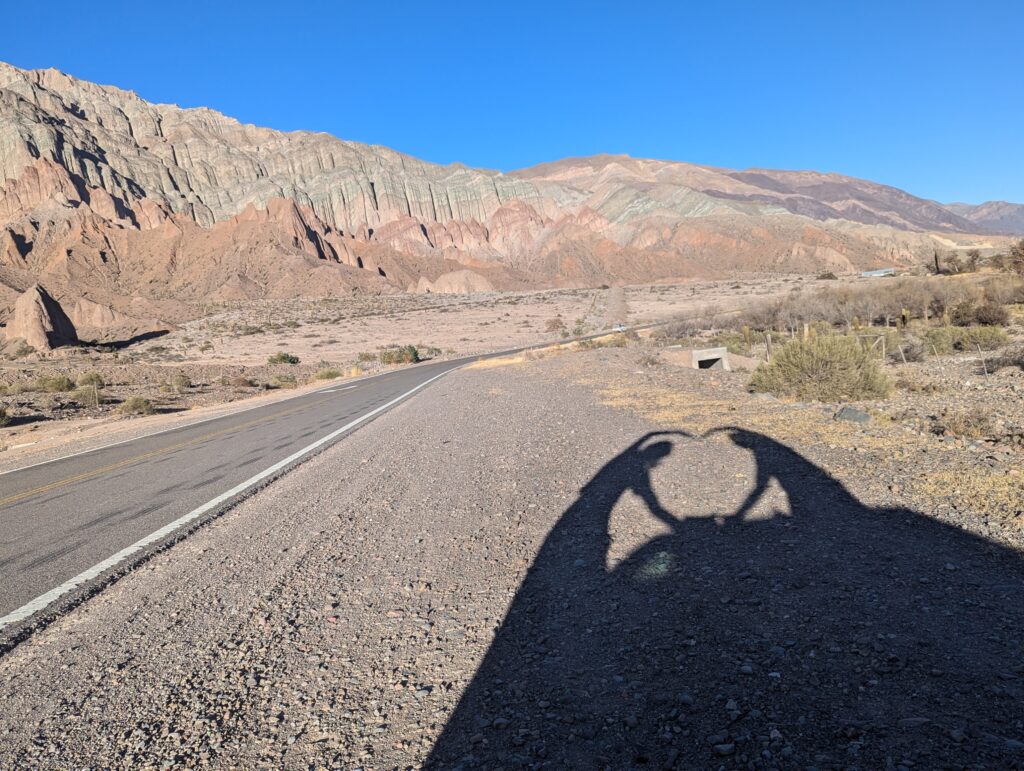
We camped for 4 hours at the restaurant from 7:30 pm to 11h30+ because our bus is at 1 am. Some people were still arriving. The Middle East food there was not the best, but the restaurant was packed. People take a lot of time to eat. There was mostly one service during the evening.
Night bus at 1 am to San Pedro de Atacama. Temperature was a bit weird during the night. Sometimes too hot, sometimes too cold. We made a long stop at 8:30 am just before the Chilean border. A girl threw up as we were at an altitude of 4200 meters. We made it to San Pedro around 11.
Next time
If we come back we could go t Iruya and San Isidro villages.

Leave a Reply